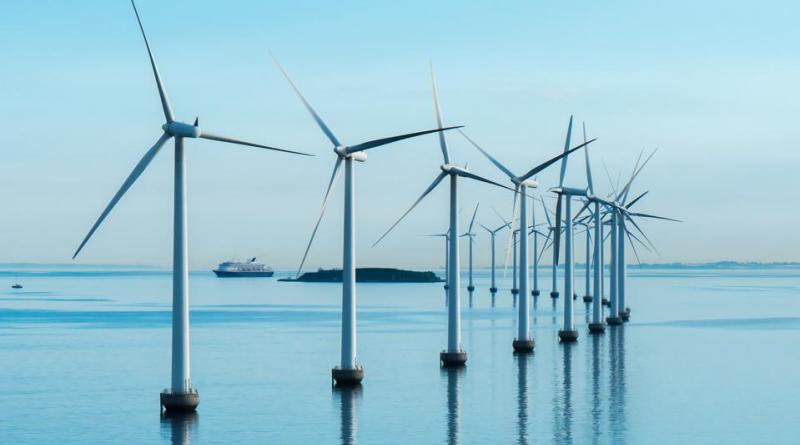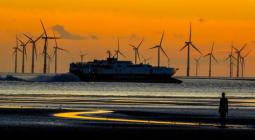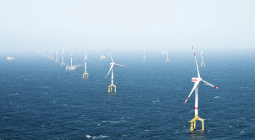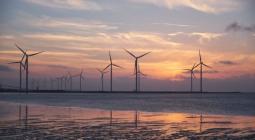Offshore Wind Helps Clean Energy Weather The Covid-19 Storm.

While the Covid-19 pandemic has devastated huge swathes of the global economy over the past six
New figures from research company BloombergNEF show that worldwide investment in new renewables capacity rose by 5% in the first half of 2020, despite the global economic shock caused by the pandemic.
The sector’s strong performance was spearheaded by the best ever six months for offshore wind, which more than made up for declining investment in solar, onshore wind and biomass.
Investors put $35 billion into offshore wind in the first six months of the year, which was more than for the entirety of 2019, and more than triple the same period last year. Some 28 ocean-based wind farms saw investment decisions, including the biggest ever deal, the $3.9 billion, 1.5GW Vattenfall Hollandse Zuid array off the coast of the Netherlands.
Other major offshore deals included the 1.1GW SSE Seagreen project off the UK, at an estimated $3.8 billion; the 600MW $3.6 billion CIP Changfang Xidao array off Taiwan; and the Fecamp and Saint-Brieuc projects in French waters, together totalling 993MW at a cost of $5.4 billion. In addition, the Chinese market really took off – there were no fewer than 17 Chinese installations financed, led by the 600MW Guangdong Yudean Yangjiang Yangxi Shapaat scheme, which will cost $1.8 billion.
Albert Cheung, head of analysis at BNEF, commented: “We expected to see Covid-19 affecting renewable energy investment in the first half, via delays in the financing process and to some auction programs. There are signs of that in both solar and onshore wind, but the overall global figure has proved amazingly resilient – thanks to offshore wind.”
Offshore wind is benefitting from the 67% reduction in levelized costs achieved since 2012, and to the performance of the latest, giant turbines, Tom Harries, head of wind analysis, said. “But the first half of this year also owed a lot to a rush in China to finance and build, in order to take advantage of a feed-in tariff before it expires at the end of 2021. I expect a slowdown in offshore wind investment globally in the second half, with potentially a new spike early next year.”
Overall investment in new renewable energy capacity (excluding large hydro-electric dams of more than 50MW) was $132.4 billion in the first half of 2020, up 5% from a revised $125.8 billion in the same period of 2019. But onshore wind investment was 21% lower to $37.5 billion, while solar funding was 12% down at $54.7 billion.
New biomass and waste-to-energy Investment fell by more than a third to $3.7 billion, but there was an almost six-fold jump in geothermal investment to $676 million. Small hydro projects of less than 50MW saw investment fall by 14% to $576 million, while biofuel refineries saw an 82% drop in funding to $250 million
China’s offshore wind boom ensured that its renewable energy investment figures grew by 42% on the same period in 2019, while European investment grew 50% and Japan’s market grew 14%. There were some spectacular increases in individual European markets – funding in France more than tripled while the UK and the Netherlands both saw investment about 2.5 times the figure a year earlier. By contrast, investment was down in India (-49%), Brazil (-26%) and Spain (-11%).
A clearer picture of the impact of the pandemic on clean energy investment will emerge when the full year figures for 2020 are published, said Angus McCrone, chief editor at BNEF. “Renewables have been helped by vastly improved competitiveness and by investor appetite for assets offering secure cash flows. However, project developers face the challenge that key people, whether at the permitting, financing or construction stages, can’t meet face-to-face. And buyers of small-scale solar systems are sensitive to changes in consumer confidence.”
In the less mature market for energy smart technologies such as battery storage, funding fell by 43%, while the biggest public markets were the relatively small IPOs of Chinese solar companies, Jinko Power Technology and Trina Solar, which raised $366 million and $359 million respectively.
29 July 2020
Forbes




